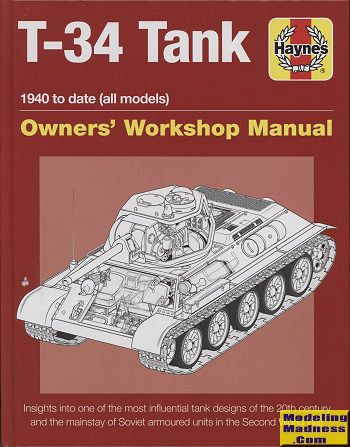 While
many consider the T-34 tank to be a revolutionary design, like many military
vehicles it was evolutionary, based on the early BT light tanks. While it no
longer had the ability to run solely on its road wheels, the
influence of the Christie suspension was still there. It was rear drive, powered
by an initially temperamental engine. It also was cramped with room in the
turret for only two people. There were issues with fumes from the engine and the
firing of the gun overpowering the crew thanks to inadequate ventilation. It had
no heating system, and thanks to the poor engine, often was only capable of
functioning for a few hundred kilometers before it needed to be changed.
While
many consider the T-34 tank to be a revolutionary design, like many military
vehicles it was evolutionary, based on the early BT light tanks. While it no
longer had the ability to run solely on its road wheels, the
influence of the Christie suspension was still there. It was rear drive, powered
by an initially temperamental engine. It also was cramped with room in the
turret for only two people. There were issues with fumes from the engine and the
firing of the gun overpowering the crew thanks to inadequate ventilation. It had
no heating system, and thanks to the poor engine, often was only capable of
functioning for a few hundred kilometers before it needed to be changed.
However, it did have several very positive features
those being sloped armor, fairly thick armor, and a very good gun. Its
appearance was a surprise to German soldiers, even though German intel had known
about it for some time.
With what is basically a killer tank, it did not show
itself well in the first year of the great patriotic war. The lack of trained
crews, the ineptitude of its officers, and the mechanical glitches often
resulted in abandon vehicles. Indeed, more T-34s were 'lost' due to breakdowns
and lack of fuel than probably anything else during the initial deployment. It
also did not help that the Soviets did not have a vehicle capable of recovering
these tanks from the battlefield.
Once the bugs had been worked out and reliability increased, the T-34
became a real threat. It was built in large numbers and was so successful that
Stalin ordered the initial production version to remain unchanged so as to not
interrupt production. Naturally, the Germans soon caught up and passed the
abilities of the T-34 by 1943 so it had to be modified. This time replacing the
76mm gun with an 85 mm gun of greater power. This change also allowed for a
three man turret and when introduced in mid 1944 put the Soviets back on an even
par with German mediums.
The book spends the majority of its pages on the
development and war history of the tank. This includes the many variations on
the T-34 chassis such as assault guns. The end of WWII did not mean an end of
the T-34 and later versions were still seeing action in 2017. In line with other
books of the series, there are 'walkaround' sections that show details of the
tank using period, museum and tech manual illustrations.
In all, it makes for a truly superb read and a great
reference on the type. I've read several of the books in this series, and this
is the best one yet.
May 2018
My thanks to the Haynes Publishing for the review
copy. Visit them at www.haynes.com. You can
also find this book at a number of other book sellers.
If you would like your product reviewed fairly and quickly, please
contact
the editor or see other details in the
Note to
Contributors.
 While
many consider the T-34 tank to be a revolutionary design, like many military
vehicles it was evolutionary, based on the early BT light tanks. While it no
longer had the ability to run solely on its road wheels, the
influence of the Christie suspension was still there. It was rear drive, powered
by an initially temperamental engine. It also was cramped with room in the
turret for only two people. There were issues with fumes from the engine and the
firing of the gun overpowering the crew thanks to inadequate ventilation. It had
no heating system, and thanks to the poor engine, often was only capable of
functioning for a few hundred kilometers before it needed to be changed.
While
many consider the T-34 tank to be a revolutionary design, like many military
vehicles it was evolutionary, based on the early BT light tanks. While it no
longer had the ability to run solely on its road wheels, the
influence of the Christie suspension was still there. It was rear drive, powered
by an initially temperamental engine. It also was cramped with room in the
turret for only two people. There were issues with fumes from the engine and the
firing of the gun overpowering the crew thanks to inadequate ventilation. It had
no heating system, and thanks to the poor engine, often was only capable of
functioning for a few hundred kilometers before it needed to be changed.